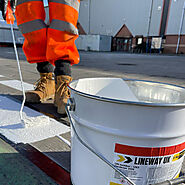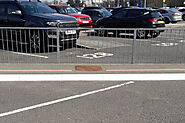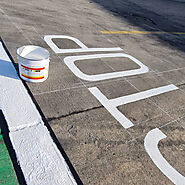-
About
- About Listly
- Community & Support
- Howto
- Chrome Extension
- Bookmarklet
- WordPress Plugin
- Listly Premium
- Privacy
- Terms
- DMCA Copyright
- © 2010-2025 Boomy Labs

 Arthur Wilson
Arthur Wilson
Listly by Arthur Wilson
You may have never given road markings a second thought before, but they have an important role to play in the world of road safety, and they are a legal requirement in all British car parks.
If the time has come for you to take on some line marking work of your very own, perhaps you need to fill in your office car parking space, or you have a parking space at the front of your home that needs a revamp, then you may want to check out this quick guide on how to get it right the first time. After all, you will likely want it to last as long as possible.

There are a few different options when it comes to choosing the right paint, the most common of which are the solvent-based and the water-based varieties, the latter of which is regularly chosen for smaller jobs because it is quick to apply, and you can find it in a wide array of colours.
You could also check out our top-of-the-range MMA cold plastic paint, a durable 2-part application paint that dries quickly and holds its colour for a long time, making it great for high-traffic zones.

It is crucial that you prepare the area to the best of your ability, and this means giving it a good old-fashioned clean.
Keeping your car parking space, or rather, the space you intend to paint, completely clear of any debris, dirt, grease, oil, mud, ice, and any other obstructions is a must. This can be tricky if you are working outside in harsher weather conditions, but as long as you manage to clear away excessive debris, you should be fine.
The neatest and clearest line markings are best applied to dry and clear surfaces, so try your best to make sure you do a clean-up; a good leaf blower or a vacuum cleaner can help here.

Use tape to carefully measure the area and make sure that you comply with the minimum dimension requirements; you can find these here.
After you have your measurements nailed down, mark out the outline of the space in chalk, this will act as your guideline for when you start getting the paint down.
You may want to use stencils to help you with this too, which we can help you with if you need.

You should make sure you have the right kind of apparatus for applying your paint, and again, you have a few options in this area.
You could elect to use a handheld applicator, an easy-to-use trigger-activated mechanism that allows you greater control over your paint as opposed to spraying it directly from an aerosol can. However, you can do this easily if you trust your steady hand.
You may also want to utilise a line marking machine, a wheeled piece of equipment that can be easily pushed and directed as you press a trigger to release the paint.

Once you have the right paint and applicator, you can get to work on marking your lines. Following your chalk guidelines, make sure you apply the paint steadily and slowly, walking in straight lines for maximum coverage and neatness.
If you are unsure as to how much paint to use, consult the manufacturer’s recommendations on the line marketing paint product.

There are PLENTY of line marking paint companies out there, but some will require large online orders, or only supply in small batches.
If you're looking to complete a line marking job yourself, take a look at Lineway UK's range of road marking paint here - https://www.linewayuk.com/line-marking-paint
